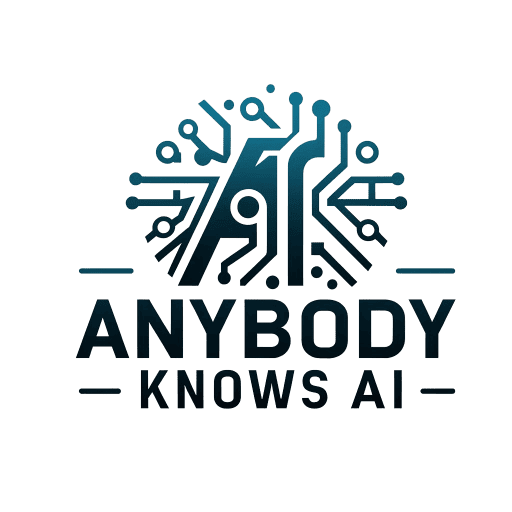Want the latest AI statistics for 2024? This article provides data on artificial intelligence market size and growth, industry adoption rates, and regional distribution. Perfect for anyone needing clear insights into AI’s current state and future directions.
Key Takeaways
- The global AI market is projected to grow significantly, with a projected value of $15.7 trillion by 2030, driven by government investments and widespread adoption across various sectors.
- AI adoption is pervasive, with 83% of businesses prioritizing AI in their strategies, particularly in sectors such as technology, healthcare, and finance, highlighting its role in enhancing efficiency and customer service.
- Public perception of AI is mixed, with 80% expressing concerns about data privacy and security while acknowledging that 87% believe AI provides a competitive advantage, indicating the need for regulatory measures to build trust.
| AI Statistic | Description | Industry | Source/Notes |
|---|---|---|---|
| Global AI Market Value | Expected to reach $500 billion by 2024, growing from $327 billion in 2023. | Overall AI | [Market Research] |
| AI in Healthcare | AI adoption in healthcare is predicted to grow by 45% in 2024, particularly in diagnostics and robotic surgery. | Healthcare | [Healthcare Report] |
| AI’s Impact on GDP | By 2024, AI could contribute up to $15.7 trillion to the global economy. | Global Economy | [PwC] |
| AI-Powered Customer Service | 80% of companies will adopt AI chatbots and virtual assistants by the end of 2024. | Customer Service | [Gartner] |
| AI in Marketing Automation | AI tools will manage 75% of all marketing automation tasks by 2024, including personalized advertising. | Marketing | [Forrester] |
| AI Talent Gap | The demand for AI-related jobs will grow by 30% in 2024, with a talent gap of 300,000 positions globally. | Tech/Employment | [McKinsey] |
| AI in Cybersecurity | AI-based cybersecurity systems will protect 60% of companies by 2024 as cyber threats increase sophistication. | Cybersecurity | [Cybersecurity Ventures] |
| AI-Generated Content | AI will create 60% of all digital content, including text, images, and video, by 2024. | Content Creation | [Content AI Report] |
| AI in Finance | AI will handle 90% of all high-frequency trading operations by 2024, reshaping the financial markets. | Finance | [Bloomberg] |
| AI Energy Savings | AI implementation in energy sectors could save up to $80 billion by optimizing energy use by 2024. | Energy | [IEA] |
| AI in Retail | 75% of all major retail chains will adopt AI-driven inventory management by 2024. | Retail | [Retail AI Study] |
| AI in Autonomous Vehicles | By 2024, 30% of new vehicles will have AI-powered self-driving features. | Automotive | [TechCrunch] |
Key AI Statistics for 2024

2024 is a year that reflects monumental strides in AI, showcasing both widespread adoption and profound impact across various sectors. The exponential growth and acceptance of AI technologies have become a cornerstone of innovation, reshaping industries and daily life by transforming business landscapes and consumer behaviors.
AI is not merely a technological advancement but a catalyst that improves decision-making quality, effectiveness, and creativity across multiple fields.
The global AI market is experiencing significant growth, embedding AI technologies deeply into everyday devices and systems to facilitate enhanced user experiences. Whether through AI tools that enable workers to focus on creativity and empathy or through AI-powered voice assistants that streamline daily tasks, the integration of AI tech is more pervasive than ever.
Artificial intelligence statistics highlight the economic impact and government investments in AI, showcasing its integration in sectors like business and manufacturing.
This section will break down the key AI statistics for 2024, including AI market size and value, adoption rates by industry, and the AI solutions market size and share by region, offering a comprehensive overview of the current AI landscape.
The Artificial intelligence market stats provide a collection of current and relevant statistics related to AI developments and trends for 2024, emphasizing its rapid growth and significant impact on various sectors.
Global AI Market Value
As of 2023, the global AI market is worth approximately $454.12 billion, reflecting a substantial increase in banking industry revenue from previous years. The market is projected to grow over 13 times in value by 2030, reaching an astounding annual income of $15.7 trillion. This growth trajectory indicates a yearly growth rate of 33% for the global AI market in 2024, showcasing the rapid expansion and increasing investment in AI technologies.
Detailed analyses of salary statistics for AI jobs in the U.S. focus on various factors such as level of experience, remote work percentage, and company size. These statistics aim to offer insights into the compensation landscape of the AI industry, highlighting how different roles and work arrangements can significantly impact salary expectations.
Government investments have played a crucial role in this growth, with global government investments in AI surpassing $100 billion in 2023. These investments foster innovation and drive the development and implementation of AI across various sectors.
For instance, the AI market in healthcare alone is expected to grow by 524% from 2024 to 2030, reaching a valuation of $32.3 billion in 2024. This significant growth in the healthcare sector highlights the potential of AI to revolutionize critical fields and improve global AI market share.
The wearable AI market is another area experiencing rapid growth, with AI technologies becoming integral in devices that enhance personal health and fitness. As AI continues to evolve, the market size and value are expected to increase, driven by advancements in generative AI and other innovative technologies. This growth reflects increased investment and the widespread adoption and integration of AI into everyday life and business operations.
AI Adoption Rates by Industry
AI adoption rates vary across multiple industries, with key sectors such as technology, healthcare, finance, and retail leading the charge. Currently, 35% of companies utilize AI services, and 83% prioritize AI in their business strategies. This widespread adoption underscores the importance of AI in driving innovation and improving operational efficiency across different fields.
For instance, 76% of Software as a Service (SaaS) companies use or explore AI adoption, while 86% of cloud companies intend to incorporate AI-driven features by the end of 2023. In addition to these sectors, 65% of global businesses have adopted AI to reduce manual or repetitive tasks, highlighting the role of AI in streamlining operations and enhancing employee productivity.
The banking industry, for instance, is seeing an increase in revenue thanks to service revenue, with many companies adopting AI to increase efficiency and improve customer service.
AI Market Share by Region
The distribution of AI market share across different regions reveals significant regional development and investment trends. North America, for instance, comprised 36.84% of the global AI market share as of the latest data, underscoring its leading role in advancing AI technologies and applications. This substantial share illustrates North America’s dominance in the AI industry and its commitment to fostering innovation and development.
Other regions are also making significant strides in AI adoption and development. The global AI market is witnessing diverse contributions from different parts of the world, each playing a unique role in the overall growth and integration of AI technologies.
These regional insights highlight the global nature of AI development and the collaborative efforts needed to drive the industry forward.
AI Usage Insights

AI technologies are gaining momentum in various sectors, transforming how businesses and individuals interact daily. In 2024, 80% of marketers believe AI will revolutionize marketing, leveraging AI for more personalized customer experiences. This widespread belief underscores the transformative potential of AI technologies in enhancing business strategies and customer engagement.
AI tools and AI technology are not confined to business applications alone; they are deeply embedded in AI users’ everyday devices and systems. From virtual assistants to algorithmic recommendations, artificial intelligence, and global AI technologies, AI technology is integral to our daily lives.
This part examines individual AI usage patterns, business AI integration, and popular AI tools and technologies, offering a detailed look at AI utilization across various domains.
Individual AI Usage Patterns
Many people regularly interact with AI technologies, often without even realizing it. In the United States, 56% of Americans regularly use AI technologies, and 51% are aware of their usage. Common applications include email spam filters, used daily by 29.5% of individuals, and virtual assistants like Alexa and Siri, used weekly by 27.5%.
Wearable fitness devices are another popular AI application, with 32.5% of people trying such devices. Interestingly, 10.7% of individuals aged 61 overuse fitness trackers daily, indicating a broad demographic engagement with AI technologies.
These usage patterns highlight the pervasive nature of AI in personal health and daily routines, showcasing its potential as a technology to enhance and simplify everyday tasks.
Business AI Integration
Businesses increasingly integrate AI to enhance operations, improve customer relations, and drive efficiency. Currently, 56% of companies utilize AI for customer service, employing automated emails and chatbots to streamline communications and enhance customer experiences. This integration transforms business operations, with 80% of staff reporting improved productivity due to AI tools.
Machine learning, data analysis, and AI are also widely used, with 48% of businesses employing these technologies to gain actionable insights and inform strategic planning. Small businesses, in particular, expect to benefit from AI in understanding customer data and trends, with 49% anticipating improvements in these areas.
This widespread adoption underscores AI’s critical role in modern business strategy and operations.
Popular AI Tools and Technologies
Chatbots are among the most popular AI tools, widely used in customer interactions by 52% of telecommunications companies. ChatGPT, a generative AI tool, has gained significant traction, with a user base of 180.5 million as of August 2023. Virtual assistants like Apple’s HomePod and Amazon Echo, equipped with natural language processing technology, have also seen widespread adoption, with over 110 million users in the U.S. alone.
Voice assistants, utilized by 51% of U.S. residents for information purposes as of early 2020, continue to be a popular AI application. The accuracy and reliability of these tools, such as Google Assistant’s 98% accuracy rate for navigation tasks, contribute to their growing popularity. As AI technologies evolve, the number of voice assistants equipped with advanced natural language processing will reach 8.4 billion by 2024.
These tools and technologies are not just enhancing user experiences but also driving the adoption of AI across various sectors. From smart speakers to conversational AI, these innovations pave the way for more intuitive and efficient interactions in personal and professional settings.
AI’s Impact on Employment

The impact of AI on employment is a topic of significant interest and concern. While AI technologies create new job opportunities, they pose risks to certain job categories. Approximately 300 million jobs worldwide could potentially be lost due to advancements in AI.
However, introducing AI is also expected to create new roles, particularly in tech-savvy regions like North America, where 20% more jobs will be available by 2027 due to AI technologies.
A significant lack of AI implementation AI training among educators has been highlighted, with a large majority reporting no formal training in AI as AI technology as part of implementing professional development.
This section explores the dual nature of AI’s impact on employment, discussing jobs created by AI, jobs at risk from AI, and the required skills for AI jobs. Understanding these dynamics is crucial for preparing the workforce for the future and leveraging AI’s potential to enhance productivity and innovation.
Jobs Created by AI
The AI industry will require 97 million workers by 2025, indicating significant job creation. Data Engineer positions are in demand, making up 23.8% of AI job listings 2023. In the U.S., Data Engineer roles constituted 21.2% of AI job postings, reflecting the critical need for data management and analysis expertise.
Remote work opportunities in AI are also on the rise, with Data Engineer positions being the most common job listing for remote work in 2023, constituting 4.7% of listings. This trend highlights the AI sector’s flexibility and diverse opportunities, offering tech-savvy professionals new roles and career paths.
Jobs at Risk from AI
Despite creating new jobs, AI also poses risks to certain job categories. According to Accenture, 40% of working hours across industries could be impacted by AI. The World Economic Forum estimates that 23% of jobs could be affected by structural labor market churn, indicating significant shifts in job roles and requirements.
Certain sectors are at higher risk, with the banking sector likely to see 48% of business tasks replaced by AI. By the early 2030s, 56.4% of jobs in transportation and storage were at high risk of automation, followed by 46.4% in the manufacturing industry.
These projections underscore the need for workforce adaptation and reskilling solutions to mitigate the impact of AI on employment.
Required Skills for AI Jobs
Certain technical skills have become indispensable for thriving in the evolving job market shaped by AI. A strong foundation in computer science is the most frequently cited skill in AI job listings, highlighting its critical importance. In 2023, 3.3% of AI job listings specifically mentioned computer science skills, underscoring the demand for technical expertise.
Additionally, Amazon Web Services (AWS) proficiency is particularly valued in Data Engineering positions, reflecting the need for cloud computing skills. Architecture skills are also emphasized in specialized AI job descriptions, showcasing the diverse skill set required for successful AI integration and development.
These skills are essential for leveraging AI technologies to their fullest potential and driving innovation across AI models and industries.
AI in Specific Sectors

AI’s transformative impact is particularly evident in the healthcare, finance, and retail sectors. In these fields, AI technologies are not only enhancing operational efficiency but also driving significant innovations.
For instance, 77% of companies are implementing or considering AI in their operations, highlighting its widespread adoption. This section will delve into how AI is revolutionizing these key sectors.
AI in Healthcare
The healthcare sector is undergoing a significant transformation with the integration of AI technologies. The AI in healthcare market is expected to reach $20.65 billion in 2023, with an impressive compound annual growth rate (CAGR) of 36.1% projected from 2023 to 2030. This growth is driven by AI’s potential to enhance diagnostic capabilities and automate tasks, making healthcare more efficient and effective.
For example, AI technologies such as machine learning and natural language processing are increasingly used to support predictions and improve diagnostics. For instance, Google’s deep ML technology has proven to be more effective than human pathologists in detecting diseases like metastatic breast cancer. Additionally, 38% of medical professionals currently use computer systems for diagnosis assistance, indicating a growing reliance on AI tools.
Public perception of AI in healthcare is also positive, with 38% of adults believing AI could improve healthcare outcomes. In South America, 64% of clinicians expect AI to influence their decision-making significantly in the coming decade. These trends underscore AI’s potential to revolutionize healthcare, enhancing clinical practices and patient outcomes.
AI in Finance
AI plays a critical role in the finance sector, particularly in cybersecurity and fraud management. Currently, 51% of businesses use AI for these purposes, highlighting its importance in detecting and preventing fraudulent activities. At JP Morgan Chase, the integration of AI is evident, with just over half of 200 employees working in AI research and more than half of 900 data scientists driving innovation in banking operations.
The impact of AI on financial operations is also significant. For instance, the Pentagon Federal Credit Union reported a 20% increase in completed loan applications and a 30% improvement in customer satisfaction after implementing AI. Generative AI is projected to increase operating profits for the U.S. banking sector by $340 billion, showcasing its potential financial benefits.
AI in Retail
The retail sector is also witnessing significant advancements with the adoption of AI technologies. AI-assisted customer interactions in retail are expected to reach 95% by 2025, reflecting the technology’s growing importance in enhancing customer experiences. The AI market size in retail was valued at $7.14 billion in 2023 and is projected to grow at a CAGR of 31.8% from 2024 to 2032.
E-commerce teams increasingly incorporate AI into their workflows, with 29% already utilizing these technologies. AI’s integration into retail environments significantly enhances customer experiences, making shopping more personalized and efficient. These trends highlight the transformative potential of AI in the retail sector, driving growth and innovation.
AI in Marketing, Customer Service, and Sales
Artificial intelligence (AI) is revolutionizing the marketing and customer relationship management, service, and sales landscape, offering unprecedented opportunities for businesses to enhance their operations and customer interactions. Here are some key statistics that highlight the impact of AI in these areas:
- Marketing: 61% of marketers believe that AI is crucial for their business, with 55% already leveraging AI-powered tools for marketing automation. These tools enable marketers to streamline their campaigns, target audiences more effectively, and personalize customer experiences, driving higher engagement and conversion rates.
- Customer Service: AI-powered chatbots are becoming a staple in customer support, with 80% of businesses utilizing them to handle customer inquiries. Notably, 62% of customers prefer interacting with chatbots for simple queries, appreciating AI’s instant responses and 24/7 availability.
- Sales: The sales sector is also experiencing a transformation, with 71% of sales professionals acknowledging the significant impact of AI on their roles. 60% of sales teams use AI-powered tools to enhance their performance, from lead scoring to personalized sales pitches.
- Predictive Analytics: AI-powered predictive analytics is a game-changer for sales forecasting, with 55% of businesses using these tools to predict future sales trends accurately. Additionally, 50% of companies employ AI to personalize their marketing campaigns, ensuring their messages resonate with the target audience.
- Customer Feedback and Service Improvement: An impressive 45% of businesses use AI to analyze customer feedback, gaining valuable insights into customer preferences and pain points. Furthermore, 40% leverage AI to enhance customer service, ensuring quicker resolution times and higher customer satisfaction.
These statistics underscore the growing importance of AI in marketing, customer service, and sales. As AI technology evolves, we can expect even more innovative applications to enhance business operations further and improve customer relationships and experiences.
Public Perception and Trust in AI

Public perception and trust in artificial intelligence are crucial for the broader acceptance of AI technologies. Trust levels vary significantly across regions and demographics, influencing how AI is perceived and adopted. In 2024, understanding these perceptions is essential for addressing concerns and maximizing the benefits of AI.
This section explores trust levels in AI systems, common concerns about AI, and positive sentiments towards these technologies.
Trust Levels in AI Systems
Trust in AI systems varies globally, with some regions exhibiting higher acceptance and usage levels. For instance, Brazil leads the world in terms of 82% of its residents using AI technologies. In the Netherlands, 53% of the population is aware of AI technologies, reflecting moderate familiarity and trust. However, only 49% of individuals trust chatbots compared to human advisors, indicating a preference for human interaction in certain contexts.
In the United States, 54% of people are ‘somewhat familiar’ with artificial intelligence, and 57% of Gen Z and Millennials report having a high or moderate level of AI knowledge. These figures highlight the generational differences in AI awareness and trust.
Despite these variations, a significant portion of the population recognizes the benefits of AI technologies in their daily lives.
Common Concerns About AI
Despite the benefits, several common concerns about AI need to be addressed. Data security and privacy issues are among the primary public concerns, with 80% of individuals apprehensive about AI being utilized for cyber attacks. Business leaders share these concerns, with 76% of CEOs anxious about the transparency of AI technologies in the industry.
The potential impact of AI on jobs is another significant concern. One in three business owners believe AI could reduce their workforce, while 24% are worried about reducing customer relationships due to AI. Additionally, 74% of people worry about AI’s potential use in creating misleading political advertisements.
These concerns underscore the need for robust regulatory measures and transparent AI practices.
Positive Sentiments Towards AI
Despite the concerns, there are many positive sentiments towards AI. 87% of global organizations believe AI technologies provide a competitive advantage. Additionally, 39% of respondents believe AI will enhance decision-making processes, making businesses more efficient and effective.
Consumers also see the benefits of AI, with 50% thinking that AI could significantly improve customer experiences. In healthcare, 38% of adults perceive that AI has the potential to improve outcomes, reflecting a positive reception towards AI technologies in critical sectors.
These positive sentiments highlight the potential of AI to bring about significant improvements across various domains.
Government and AI Investments
Governments and manufacturing companies worldwide recognize AI’s transformative potential and are investing significantly to foster its development and adoption. AI is projected to add $15.7 trillion to the global economy by 2030, underscoring its economic significance.
This section explores government funding for AI, national AI strategies, and regulatory measures to ensure ethical and effective AI deployment.
Government Funding for AI
Government funding is crucial for advancing AI technologies and ensuring their widespread adoption. Between 2019 and 2023, China’s government invested approximately $133 billion in AI, reflecting a significant commitment to catching up with global leaders. In 2023, the U.S. allocated an estimated $5 billion specifically for AI initiatives related to national defense, highlighting the strategic importance of AI.
The total U.S. government investment in AI from 2019 to 2023 reached $328 billion, demonstrating a budget tripling since 2018. These investments drive innovation and development in various AI fields, from natural language processing to autonomy and machine learning. Such focused investments are essential for maintaining a competitive edge in the global AI market.
National AI Strategies
National AI strategies are pivotal in shaping the future of AI within countries. Currently, 46 countries have implemented their national AI strategies, with 30 additional countries projected to finalize their plan by the end of 2023, bringing the total to 76 nations. These strategies are crucial for coordinating AI development, fostering innovation, and ensuring ethical standards.
National AI strategies also play a key role in establishing a country’s tech policy, helping to integrate AI into various sectors and drive economic growth. These strategic plans are essential for harnessing the full potential of AI and addressing the challenges associated with its deployment.
Regulatory Measures for AI
With the rapid advancement of AI technologies, regulatory measures are necessary to ensure ethical standards and mitigate potential risks. As of 2023, just half of 30 countries have introduced legislation regulating AI deployment. These regulations address various aspects, including data privacy, security, and transparency, ensuring that AI is used responsibly and ethically.
Regulatory measures are essential for addressing public concerns and building trust in AI technologies. They provide a framework for ethical AI deployment, ensuring that AI benefits society while minimizing potential risks. These measures are crucial for fostering a safe and secure AI environment.
AI Thought Leaders and Influencers
The AI landscape is shaped by numerous thought leaders and influencers at the forefront of innovation and research. These individuals are advancing the field of AI and shaping the conversation around its applications and implications. Here are a few notable thought leaders in the AI space:
- Andrew Ng: Co-founder of Coursera and former chief scientist at Baidu, Andrew Ng is a leading AI and machine learning expert. His work focuses on making AI accessible and beneficial to all, and he is a prominent advocate for AI education and ethical AI practices.
- Fei-Fei Li: As the director of the Stanford Artificial Intelligence Lab (SAIL) and former chief scientist of AI at Google Cloud, Fei-Fei Li is a pioneer in AI and computer vision. Her research has significantly advanced the field, and she is a strong proponent of human-centered AI.
- Yann LeCun: Director of AI Research at Facebook and Silver Professor of Computer Science at New York University, Yann LeCun is a leading figure in AI and deep learning. His contributions to developing convolutional neural networks have been instrumental in the progress of AI technologies.
- Geoffrey Hinton: Known as one of the “Godfathers of AI,” Geoffrey Hinton is a professor of computer science at the University of Toronto and a former chief scientific advisor at the Vector Institute. His groundbreaking work in neural networks and deep learning has laid the foundation for many modern AI applications.
- Demis Hassabis: Co-founder and CEO of DeepMind, Demis Hassabis is a leading expert in AI and machine
Top AI Influencers and Thought Leaders
AI Trends to Watch in 2024

As we move into 2024, several key AI trends are expected to shape the future of technology and business. Staying informed about these trends is essential for unlocking the potential of AI and gaining a competitive edge in the rapidly transforming business landscape.
This section explores the growth of machine learning and generative AI, advancements in machine learning and natural language processing, and the role of AI in edge computing.
Growth of Generative AI
Generative AI is leading the way as the most significant trend in AI for 2024. The global market for generative AI is projected to reach $100 billion by 2025, reflecting a rapid increase from current valuations. This technology is being utilized in diverse fields, such as healthcare for drug discovery, entertainment for content creation, and marketing for customized ads.
Significant advancements in generative AI capabilities are expected to lead to innovative solutions in various industries, driving further investment and development. These advancements enhance current applications of generative artificial intelligence and pave the way for new possibilities and innovations in AI.
Advancements in Natural Language Processing
Natural language processing (NLP) technology is evolving rapidly, with large language models and significant improvements in understanding and generating human language. New NLP models are increasingly designed to understand multiple languages, enhancing global accessibility to AI technologies. These advancements make AI more intuitive and effective in interacting with users, driving its adoption across various sectors.
NLP is also crucial in enhancing AI-powered voice assistants, enabling more accurate and natural interactions. These improvements transform how we interact with technology, making AI more accessible and user-friendly.
AI in Edge Computing
Edge computing is emerging as a critical trend in AI, referring to processing data near the source of data generation rather than relying on a centralized data-processing center. AI algorithms can optimize real-time data analysis at the edge, leading to faster decision-making and reduced latency.
This capability is particularly valuable in applications like facial recognition technology, predictive maintenance in manufacturing, and autonomous vehicles processing sensor data quickly.
The integration of AI in edge computing is enhancing the efficiency and effectiveness of various applications, driving the development of more responsive and intelligent systems. This trend is expected to continue gaining momentum in 2024, offering new opportunities for innovation and growth.
Summary
In summary, 2024 is poised to be a landmark year for AI, with significant advancements and widespread adoption across various sectors. The global AI market is witnessing exponential growth, driven by substantial investments and the integration of AI technologies into everyday life. AI is transforming industries, creating new job opportunities, and enhancing decision-making processes.
As we look to the future, staying informed about AI trends and developments is crucial for leveraging its potential and driving innovation. The insights provided in this blog post highlight the transformative power of AI and its impact on our world. Embracing these changes will enable us to harness the full potential of AI, paving the way for a more efficient, innovative, and prosperous future.
Frequently Asked Questions
What is the projected growth of the global AI market by 2030?
The global AI market is projected to expand significantly, with an estimated annual revenue of $15.7 trillion worldwide by 2030. This represents a growth of over 13 times in value.
Which industries are leading in AI adoption?
Technology, healthcare, finance, and retail are the top priority key industries leading in AI adoption. Their advancements reflect a growing reliance on artificial intelligence to enhance efficiency, labor productivity growth, and innovation.
How are governments investing in AI development?
Governments worldwide are heavily investing in AI development, with notable examples including China’s investment of approximately $133 billion from 2019 to 2023 and substantial funding from the U.S. for various AI initiatives. This significant financial commitment underscores the strategic importance placed on AI by nations.
What are some common concerns about AI?
Common concerns about AI encompass data security and privacy, the potential for job displacement, racial and ethnic bias, its use in cyber attacks, and misleading political messaging. Addressing these issues is crucial for ensuring responsible AI development and deployment.
What are the key AI trends to watch in 2024?
The key AI trends to watch in 2024 are the growth of generative AI, advancements in natural language processing, and the increasing importance of AI in edge computing. Staying informed about these developments will be crucial for leveraging AI’s potential effectively.







